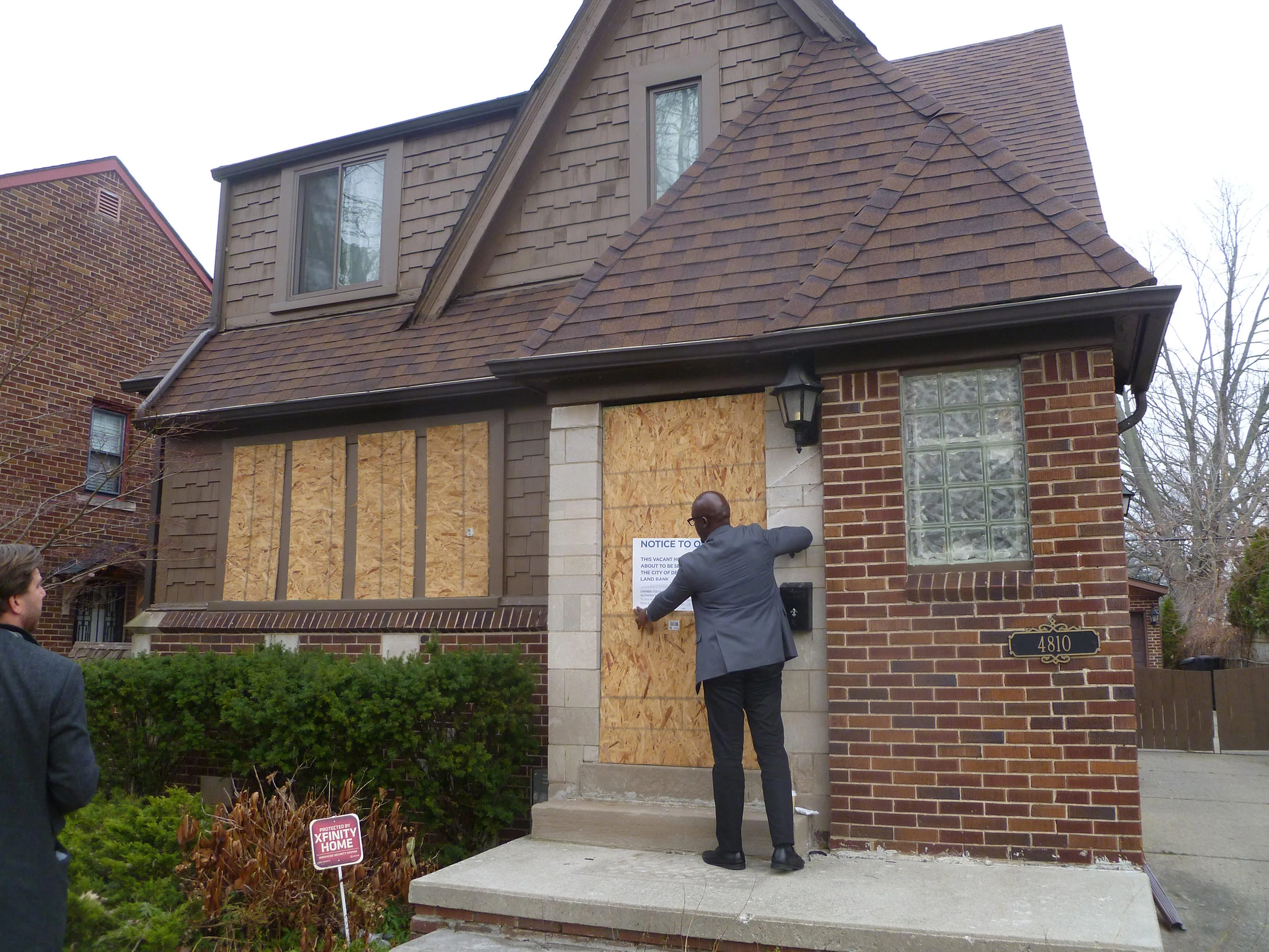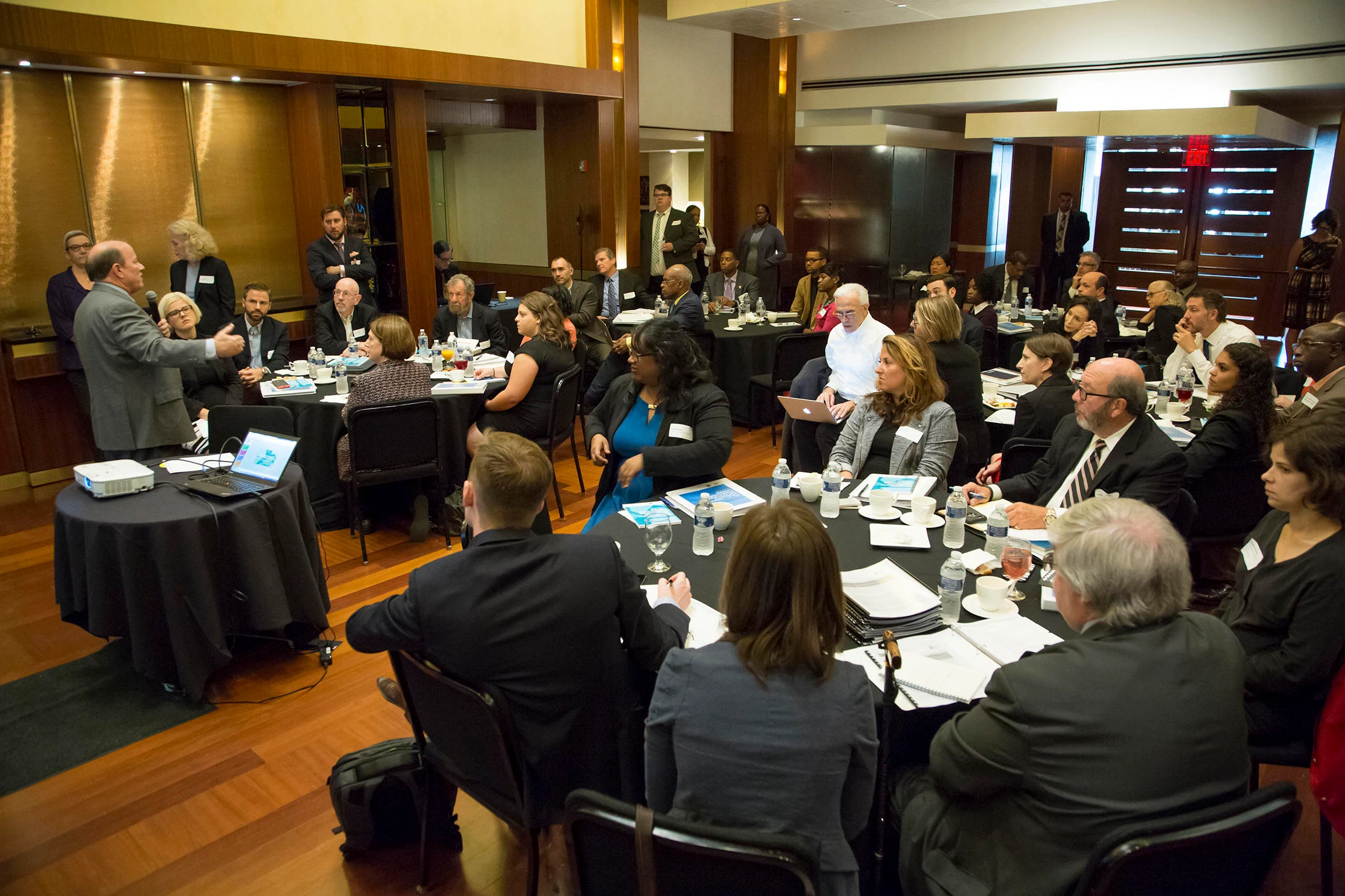Detroit
Helping Detroiters Buy Back Foreclosed Homes
Bloomberg Associates worked with the City of Detroit to enhance its Buy Back Program for homes that have been foreclosed on, and in the process stem blight and increase home ownership.
Mayor Duggan has an incredibly ambitious program … to put the homes that can be put back to productive use into the hands of people that want to live there and be a part of neighborhoods coming back in Detroit.
Jacob Koch, Bloomberg Associates
Relevant Expertise
Improve Public Space and Neighborhoods
- Long-Term Planning and Zoning
Support Marginalized and Vulnerable Populations
- Criminal and Social Justice Insights
- Financial Assistance Access (EITC)
Challenge
The Detroit Land Bank Authority (DLBA), the nation’s largest land bank, owns thousands of properties, including tens of thousands of homes in foreclosure. The DLBA and the City knew that any number of these homes had people living in them, but had no way of knowing which of these properties were occupied. This gave rise to safety and other issues.


Approach
To first understand the breadth of the issue, Bloomberg Associates brought together over 50 local and national experts, City agency heads, senior staff and other groups to Detroit for a workshop. Together, these stakeholders, in conversation with Mayor Duggan, sought to explore and vet potential solutions while fostering and deepening working relationships to improve coordination, collaboration and impact.
One key insight from the meeting was that lack of data around occupied foreclosed homes had long hindered the Mayor’s Office’s efforts to understand the breadth of the problem. To this end, Bloomberg Associates conceptualized and spearheaded the development of a statistical model to identify Occupied Foreclosed Properties (OFPs) in the Land Bank inventory. By compiling information on electricity and water consumption, U.S. Postal Service data, and other publicly available information, the team was able to create a model to predict whether or not a home is currently occupied. The Occupancy Predictor Model (OPM) assesses the likelihood of property occupancy on a monthly basis and maps the results so the City can intervene in a smarter and more targeted way.
The Detroit Land Bank’s Buy Back Program allows residents a path to buy homes in foreclosure back from the Land Bank. Using the new data provided through the collaboration with Bloomberg Associates, the DLBA was able to effectively target its outreach efforts to maximize participants in the buyback program. In an effort to give more Detroiters the opportunity to buy back their homes, the DLBA hired BeneStream to screen program participants and ensure that Detroit residents were receiving all the public benefits for which they were eligible, thereby augmenting their income.
Impact
Through the collaboration between Bloomberg Associates, the DLBA and the City of Detroit, Detroiters were given the opportunity to buy back their homes and help rebuild their neighborhoods. In the pilot Buy Back Program, hundreds of people were able to purchase their homes, helping to provide stability and a sense of belonging to these residents. The Occupancy Predictor Model that was created for this project continues to be used, not only by the DLBA for its Buy Back Program, but across city agencies to better serve Detroit residents.
Metrics
525+ successful buyback program participants
$8.5M+ value of public benefits accessed by buyback program participants